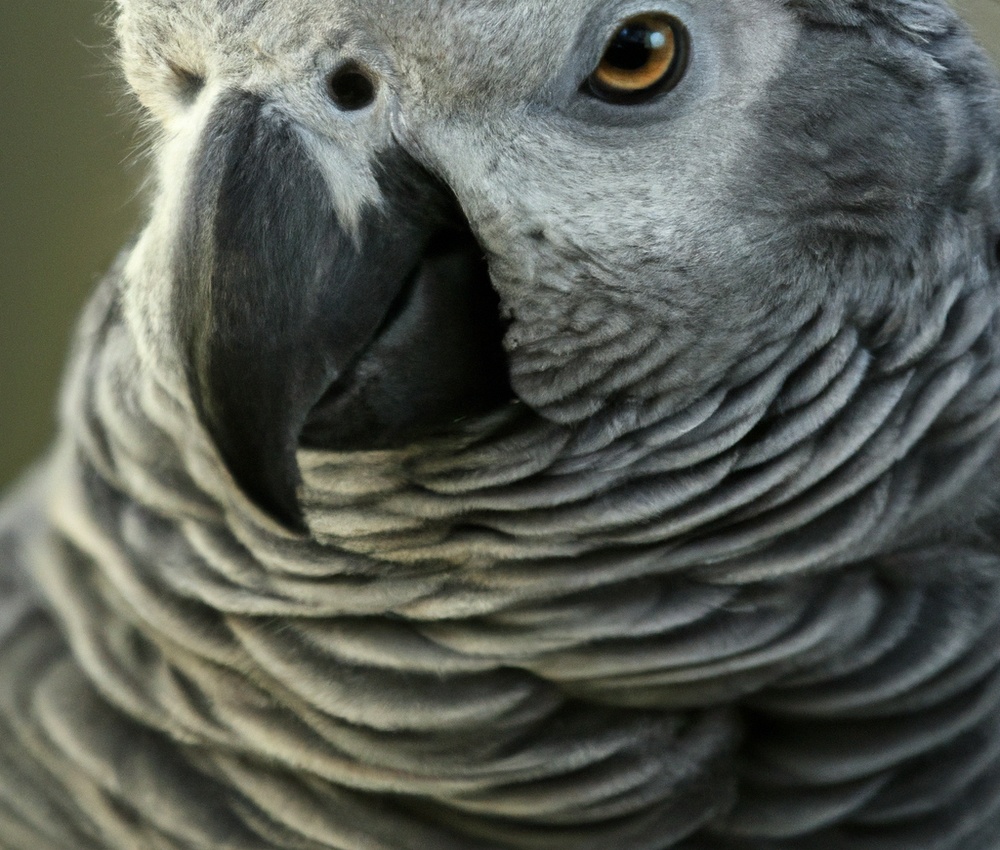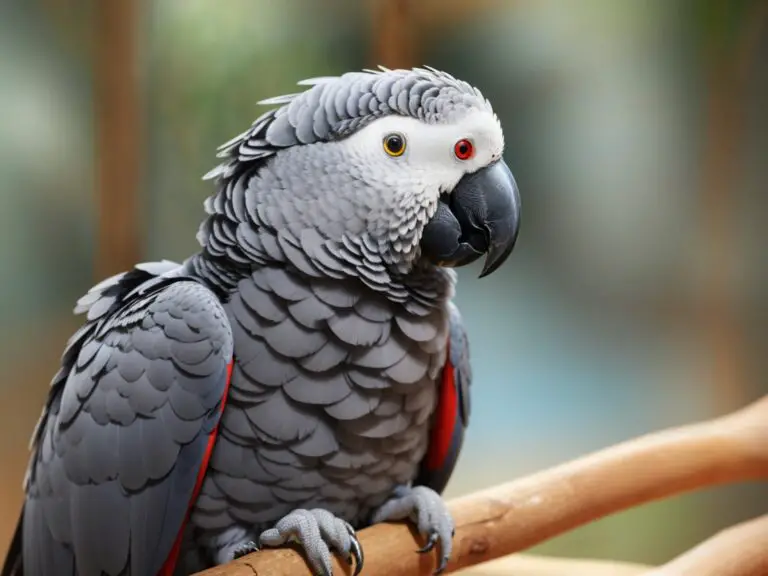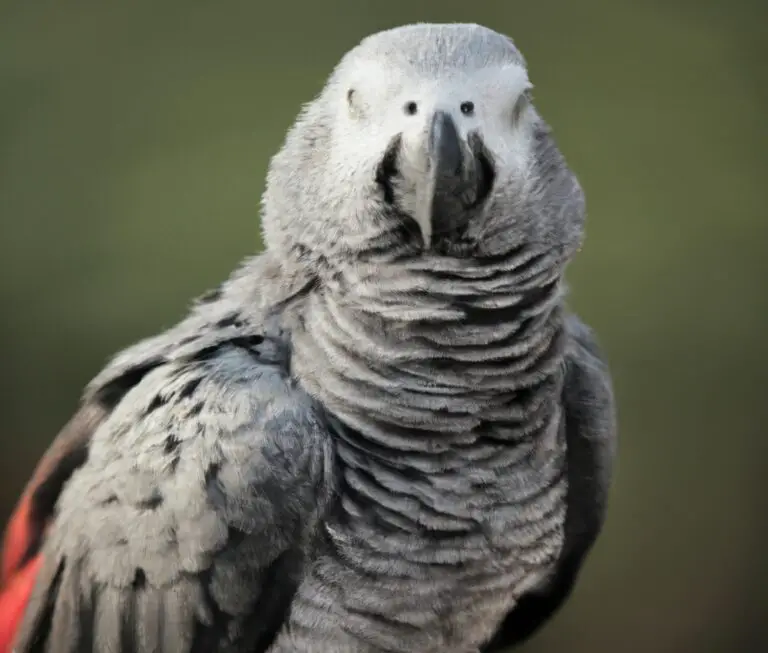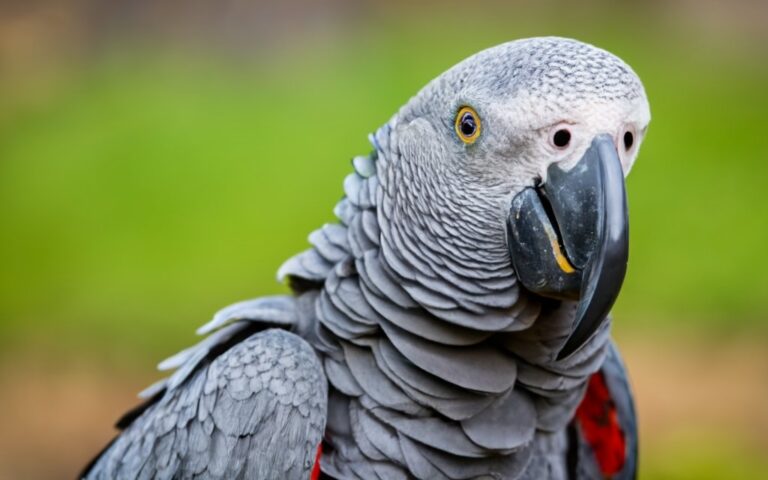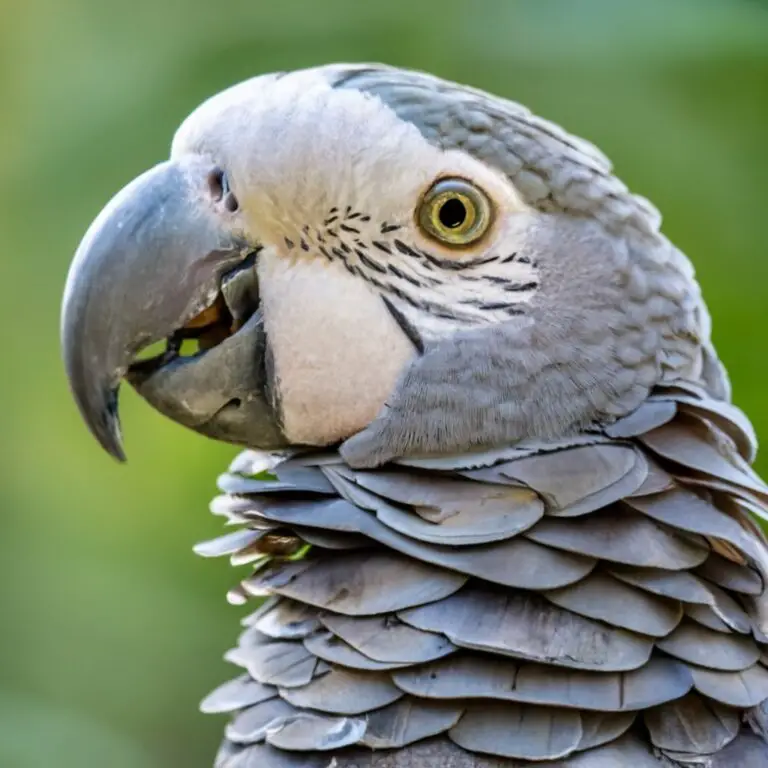How To Care For An African Grey Parrot?
Key Takeaways:
- African grey parrots require a nutritious diet consisting of fruits, vegetables, and a variety of nuts.
- Social interaction and mental stimulation are crucial to keep African grey parrots happy and healthy.
- Regular veterinary check-ups are necessary to monitor the overall health and well-being of African grey parrots.
- Maintaining a clean living environment and providing ample exercise helps prevent common health issues in African grey parrots.
Are you ready to embark on a fascinating journey of companionship with one of the most intelligent and captivating creatures on the planet?
Look no further than the African Grey Parrot! These magnificent birds have stolen the hearts of bird enthusiasts around the world, but owning one comes with great responsibility.
As an expert in African Grey Parrot care, I’m here to guide you through creating the perfect environment, providing a balanced diet, maintaining their health and well-being, socializing and training, and ensuring they get plenty of exercise.
Get ready to dive into a world filled with vibrant feathers, joyful chirps, and a friendship that will last a lifetime.
| Topic | How to care for an African Grey Parrot? |
| Category | Pets |
| Species | African Grey Parrot |
| Topic Overview | Caring for an African Grey Parrot requires attention to their diet, environment, and social interaction. This table outlines the key aspects of their care. |
| Table of Contents | |
| Aspect | Description |
| Diet | A balanced diet consisting of pellets, fresh fruits, and vegetables. |
| Housing | A spacious cage with toys, perches, and a comfortable environment. |
| Enrichment | Providing mental stimulation through toys, puzzles, and social interaction. |
| Grooming | Regular grooming, including nail trims and feather care. |
| Training | Positive reinforcement-based training for behavior and vocabulary. |
| Healthcare | Regular check-ups, vaccination, and monitoring for common parrot diseases. |
| Socialization | Spending quality time with the parrot, socializing and bonding with them. |
Creating the Perfect Environment for Your African Grey Parrot
To create the perfect environment for your African Grey Parrot, focus on cage size and setup.
Cage size and setup
Cage size and setup for your African Grey Parrot is of utmost importance.
Provide a spacious cage that allows your parrot to spread its wings and move around freely.
A minimum cage size of 3 feet by 3 feet by 4 feet is recommended.
Make sure the bars are appropriately spaced to prevent your parrot from getting stuck or escaping.
Include perches, toys, and a variety of stimulating enrichment to keep your parrot happy and mentally engaged.
Position the cage in a quiet area of the house away from drafts, direct sunlight, and excessive noise.
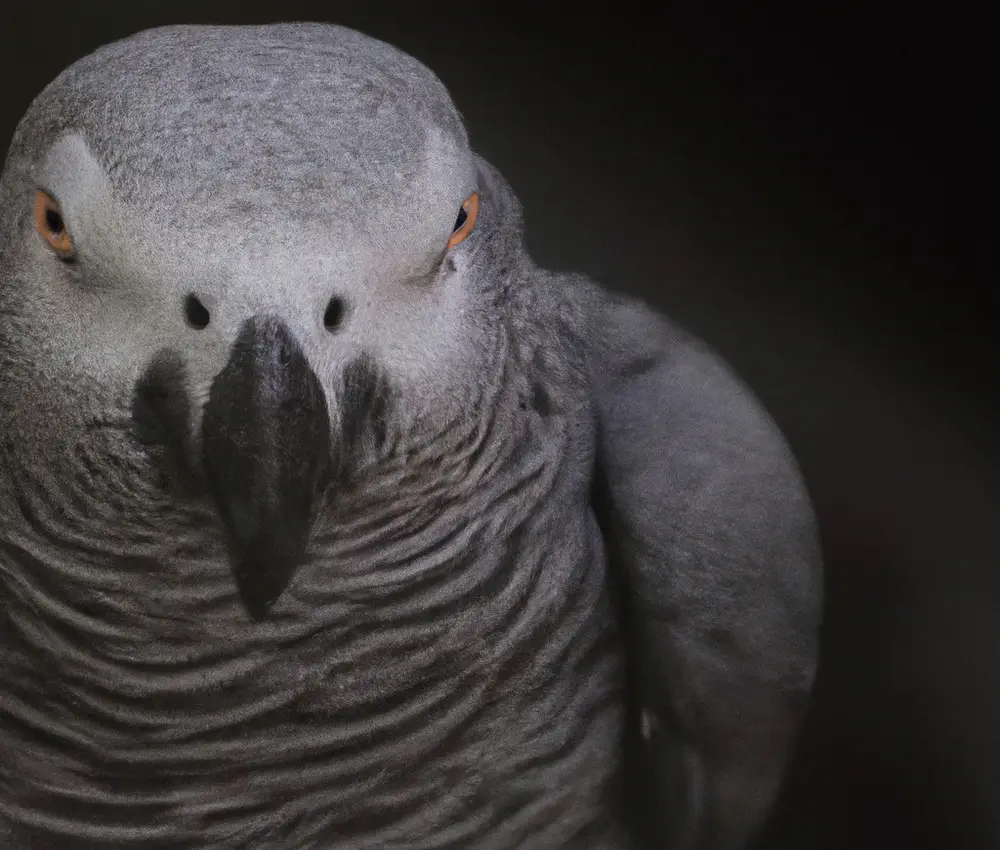
Temperature and lighting requirements
Temperature and lighting requirements are crucial for creating the perfect environment for your African Grey Parrot. It is important to maintain a temperature between 65-75°F for their well-being.
Ensure that the temperature remains consistent, avoiding any extreme fluctuations.
In terms of lighting, provide your parrot with 10-12 hours of natural or full-spectrum lighting each day. This will simulate their natural habitat and support their overall health.
Regularly monitor and adjust the temperature and lighting levels as needed to keep your parrot comfortable and happy.
Choosing the right toys and perches
Choosing the right toys and perches for your African Grey Parrot is essential. Here are some tips to keep in mind:
- Toys: Look for toys that are safe, durable, and mentally stimulating. Parrots love toys they can chew on, such as wooden blocks or natural fiber ropes. Interactive toys, like puzzle toys or foraging toys, can provide mental stimulation and keep your parrot entertained. Avoid toys with small parts that could be swallowed.
- Perches: Provide a variety of perches with different textures and sizes to keep your parrot’s feet healthy. Natural branches make great perches as they have different diameters, which can help exercise your parrot’s foot muscles. Avoid using sandpaper or cement perches, as they can cause irritation or injury.
Remember to regularly inspect your parrot’s toys and perches for signs of wear or damage and replace them if needed. Creating a stimulating and comfortable environment will help keep your African Grey Parrot happy and healthy.
Feeding and Hydration for African Grey Parrots
To keep your African Grey Parrot healthy, focus on providing a balanced diet and ensuring they have access to fresh water.
Foods to avoid
There are certain foods that you should avoid feeding to your African Grey Parrot. These can be harmful to their health and well-being.
Here are some foods you should refrain from giving to your parrot:
- Avocado: Avocado contains a substance called persin, which is toxic to birds.
- Chocolate: Chocolate contains theobromine, which is toxic to birds and can be fatal if consumed in large quantities.
- Alcohol: Alcohol is toxic to birds and can lead to serious health issues or even death.
- Caffeine: Caffeinated beverages like coffee and tea should be kept away from your parrot, as they can be harmful to their cardiovascular system.
- High-fat, fried, or salty foods: These foods can lead to obesity, heart problems, and other health issues in African Grey Parrots.
- Foods high in sugar or artificial sweeteners: Like in humans, high sugar and artificial sweeteners can cause dental problems and weight gain in parrots.
- Dairy products: African Grey Parrots are lactose intolerant and cannot digest dairy products properly.
Remember, providing a balanced and nutritious diet is crucial for the health and well-being of your African Grey Parrot. By avoiding these foods, you can help ensure the longevity and vitality of your feathered friend.

Providing fresh water and maintaining hygiene
Providing fresh water and maintaining hygiene are essential for the well-being of your African Grey Parrot.
Here are some key points to keep in mind:
- Fresh Water: Provide clean, freshwater to your parrot daily. Change the water at least once a day to keep it free from bacteria and dirt.
- Hygiene: Regularly clean your parrot’s water dish to prevent the growth of harmful bacteria. Wash it with mild soap and water, and rinse thoroughly.
- Avoid Contamination: Ensure that the water dish is placed away from food and waste areas to prevent any contamination.
- Monitoring: Keep an eye on the water level and cleanliness throughout the day. African Grey Parrots are intelligent animals and may sometimes play in the water, leading to spills or debris.
Maintaining the Health and Well-being of Your African Grey Parrot
Taking care of your African Grey parrot’s health and well-being is essential for their overall happiness and longevity.
Regular veterinary check-ups and vaccinations
Regular veterinary check-ups and vaccinations are crucial for the health and well-being of your African Grey Parrot.
During these check-ups, the vet will perform a physical examination, check for any signs of illness, and provide necessary vaccinations.
Vaccinations help protect your parrot from common diseases and can prevent serious health issues.
By scheduling regular veterinary check-ups, you can catch any potential health problems early and ensure that your parrot receives the necessary care and treatment.
Preventing stress and boredom
Preventing stress and boredom in your African Grey Parrot is essential for their overall well-being. Here are a few tips to help keep your feathered friend happy and content:
- Provide plenty of mental stimulation through toys, puzzles, and foraging activities.
- Create a safe and enriching environment with perches, swings, and different textures.
- Establish a consistent daily routine to give your parrot a sense of security.
- Ensure social interaction by spending quality time with your parrot and exposing them to new experiences.
- Offer a nutritious and varied diet to keep them physically and mentally healthy.
Remember, a happy and mentally stimulated African Grey Parrot is a healthy one!
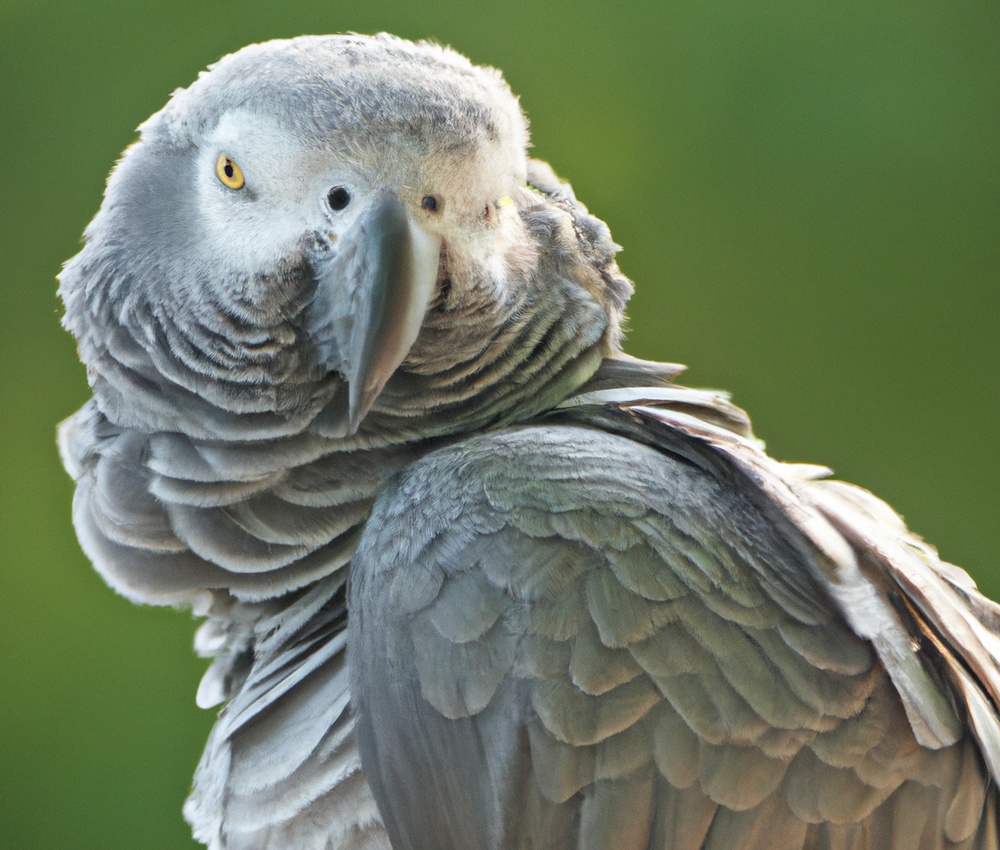
Socializing and Training Your African Grey Parrot
Build trust and bonding with your parrot through consistent and positive interactions. Teach basic commands and tricks to enhance their cognitive abilities and provide mental stimulation.
Encourage social interaction and provide opportunities for your African Grey Parrot to engage with you and other humans.
Building trust and bonding with your parrot
Building trust and forming a strong bond with your parrot is vital for a healthy relationship. Here are a few tips to help you do so:
- Spend quality time together: Interact with your parrot regularly, talking to them, and providing attention and affection.
- Offer favorite treats: Use their favorite foods to reward good behavior and establish positive associations.
- Respect their boundaries: Allow your parrot to approach you on their terms, and never force physical contact or interactions.
- Create a safe environment: Ensure their cage is comfortable and secure, providing them with a sense of security.
- Be patient and consistent: Building trust takes time, so be patient and maintain a consistent routine to establish reliability.
- Use positive reinforcement: Reward your parrot when they exhibit desired behaviors, such as stepping onto your hand or mimicking words.

Teaching basic commands and tricks
Teaching basic commands and tricks to your African Grey Parrot is an enjoyable and rewarding experience.
Here are a few tips to get you started:
- Start with simple commands like “step up” and “step down.” Use positive reinforcement, such as treats or praise, to reward your parrot when they successfully follow the command.
- Once your parrot has mastered the basic commands, you can move on to teaching tricks like “turn around” or “wave.” Break down each trick into small steps and be patient with your parrot as they learn.
- Use clicker training to reinforce positive behavior. The clicker is a small device that makes a distinct sound when pressed. Pair the click with a reward, like a treat, to associate the sound with good behavior.
- Consistency is key. Practice the commands and tricks regularly, preferably in short training sessions throughout the day. This will help your parrot retain what they’ve learned and continue to progress.
- Keep training sessions fun and engaging. Use toys, props, and your parrot’s strong intelligence and problem-solving skills to make the training process enjoyable for both of you.
Remember, every parrot is unique, so be patient and adapt your training methods to suit your bird’s personality and learning style.
With time, consistency, and lots of positive reinforcement, your African Grey Parrot will become a pro at basic commands and tricks.

Encouraging mental stimulation and social interaction
To keep your African Grey Parrot mentally stimulated and socially engaged, there are a few things you can do. One option is to provide a variety of toys and puzzles that challenge their problem-solving skills.
I recommend rotating the toys regularly to keep things interesting.
Additionally, spending quality time with your parrot is important. Interaction through talking, teaching new words or phrases, and playing games can greatly enhance their mental stimulation and social interaction.
Lastly, consider introducing your parrot to other friendly pets or exposing them to new environments occasionally to further enrich their experiences.
Exercise and Physical Activity for Your African Grey Parrot
To keep your African Grey Parrot healthy and happy, it is important to provide them with a suitable exercise space, promote flight and physical exercise, and incorporate mental challenges and games.
Providing a suitable exercise space
Providing a suitable exercise space is essential for the physical and mental well-being of your African Grey Parrot.
Ensure the space is bird-proofed and spacious enough for your parrot to stretch its wings and move around comfortably.
Include perches, toys, and activities that encourage exercise, such as ladders, swings, and puzzles.
Rotate the toys regularly to keep them engaged.
Consider adding natural elements like branches for a more enriching experience.
Spend time playing and interacting with your parrot in this space to encourage exercise and strengthen your bond.
Promoting flight and physical exercise
Promoting flight and physical exercise is vital for the overall well-being of your African Grey parrot.
Regular exercise and flight help A.
Grey Parrots maintain a healthy weight, strengthen their muscles, and stimulate their minds.
To encourage flight, provide a spacious and safe environment allowing your parrot to fly around freely.
Offer a variety of toys and perching options to promote active movement.
Ensure daily out-of-cage time for exercise and play sessions.
Regular physical activity will keep your African Grey happy and healthy!
Incorporating mental challenges and games
Incorporating mental challenges and games is essential for keeping your African Grey Parrot mentally stimulated and happy.
Here are some ideas to try:
- Puzzle toys: Provide your parrot with puzzles that require problem-solving skills, like ones with hidden treats or toys that need to be manipulated to reach a reward.
- Training sessions: Teach your parrot new tricks or behaviors through positive reinforcement training. This engages their mind and strengthens your bond.
- Foraging activities: Hide treats in different locations around their enclosure or create foraging toys that require your parrot to work for their food. This mimics their natural behavior in the wild.
- Interactive toys: Invest in toys that require your parrot to push buttons, solve puzzles, or manipulate objects to receive a reward. This keeps them mentally engaged and prevents boredom.
- Rotate toys: Switch out toys regularly to keep things interesting for your parrot. Introduce new toys every few weeks and remove ones they have become bored with.
Remember, mental stimulation is just as important as physical exercise for the well-being of your African Grey Parrot.
Incorporating these challenges and games will help keep them entertained, happy, and mentally sharp.
FAQ: Frequently Asked Questions about Caring for African Grey Parrots
What is the lifespan of an African Grey Parrot?
African Grey Parrots have an impressive lifespan of up to 50 to 60 years in captivity.
With proper care and nutrition, they can become long-term companions.
Regular visits to the vet, a balanced diet, and a stimulating environment contribute to their overall health and well-being.
Providing mental and physical stimulation through toys, social interaction, and training can help ensure a happy and fulfilling life for your African Grey Parrot.
How often should I clean my parrot’s cage?
Parrots are known for making a bit of a mess, so keeping their cage clean is important for their health and wellbeing.
As a general guideline, you should clean your parrot’s cage at least once a week.
This involves removing soiled bedding, wiping down the cage bars, and clearing away any uneaten or spoiled food.
It’s also a good idea to spot clean the cage daily by removing any droppings or messes.
Regular cleaning helps prevent the buildup of bacteria and keeps your parrot’s living space tidy and hygienic.
Can African Grey Parrots talk?
Yes, African Grey Parrots can talk! They are known for their impressive ability to mimic and imitate human speech. African Greys have a high level of intelligence and vocal skills, allowing them to learn and reproduce a wide range of sounds and words.
They can even understand the meaning of certain words and use them appropriately in conversation.
However, not all African Greys will develop the same talking abilities, as individual birds may have different preferences and tendencies. With proper training, socialization, and consistent interaction, you can encourage your African Grey Parrot to become a talented talker.
Final Verdict
Caring for an African Grey Parrot requires setting up the perfect environment, providing a balanced diet, maintaining their health and well-being, socializing and training, and ensuring they get enough exercise.
By following these guidelines, you can create a nurturing and stimulating environment for your parrot, promoting their happiness and overall health.
Remember to regularly check on their veterinary care, be mindful of their diet, and provide mental stimulation and social interaction.
With proper care and attention, your African Grey Parrot can thrive and bring joy to your life for many years to come.

